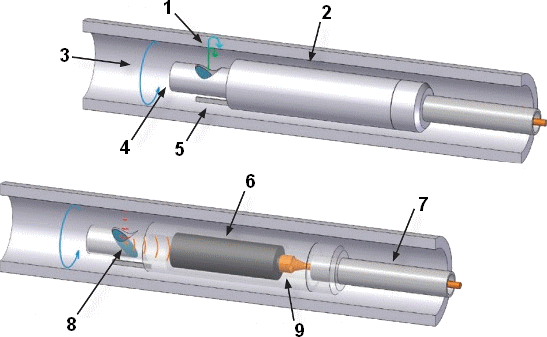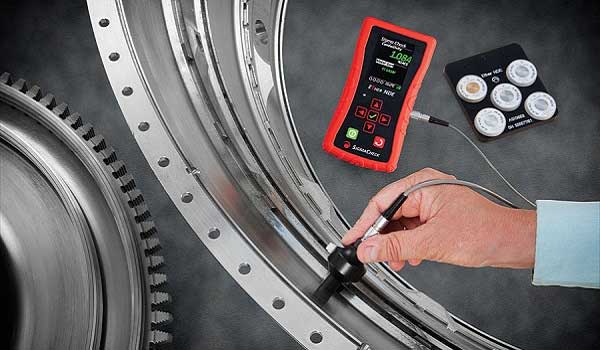Internal Rotary Inspection System
IRIS is a technique that can be applied on both ferrous and non- ferrous materials and even on non-conductive materials like plastics. With IRIS the remaining wall thickness of tubes can be accurately measured. IRIS is more accurate than other tube inspection techniques and has the advantages of presenting information about the geometry of defects. Local defects and wall-loss on both sides of the tube can be accurately measured. Defects under support plates can be measured without any limitations and IRIS allows detection of corrosion and thinning on a wide range of tube diameters (ID 14,5 – 76 mm) and wall thicknesses (1.25 – 8.0 mm) depending on the tube OD.

How it works?
Because IRIS is an ultrasonic technique, it requires a coupling agent. In this case, water. Therefore, the tubes to be tested must first be immersed in water in order to use this technique. IRIS is based on a transducer that generates an ultrasonic pulse parallel to the axis of the tube under test. The technique also relies on a rotating mirror that concentrates the ultrasonic wave in the tube wall.
The mirror is driven by a small turbine driven by the pressure of the water pumped into the tube. Part of the ultrasonic wave is reflected by the inner diameter wall (ID), while the rest is reflected by the outer diameter wall (OD) of the tube. Since the ultrasonic velocity of the tube material is known, the thickness of the wall can be determined by calculating the difference in escape time between the two diameters. When the probe is pulled, the rotational motion of the mirror results in a spiral scan path.
A critical aspect of IRIS is to ensure that the mirror is in the center of the tube. An ultrasonic pulse that is not in the center of the tube will produce a distorted scan image due to the different sound paths of the ID and OD wall. For this reason, most IRIS kits are equipped with features to help the operator keep the system centered.

- The UT beam is reflected by the inner and outer walls of the tube
- Turbine body
- Tube is flooded with water
- The rotor is propelled by water pressure
- Syncronizatioen pin
- Focalized immersion transducer
- The pobe cable and centering device carry water and coaxial cable
- Ultrasounds are reflected by a mirror angled at 45deg. The mirror rotates at appoximately 40 r/s
- Electrial connection to the UT transducer
Advantages
- IRIS measures the absolute wall thickness value, as well as the internal and external diameters of the tube
- Is accurate to +/- 0.127 mm
- Can be used for ferrous and non-ferrous tubes
- Is excellent for identifying support wear
Limitations
- IRIS is not suitable/reliable to detect small pittings and cracks
- It is not or only hard to apply in confined space
- Bended tubes (U-tubes) cannot be inspected within the bended area.
- Tubes to be tested have to be perfectly clean to the bare metal in order to acquire adequate data.
- Compared to techniques such as eddy current, the scanning speed is considerably slower. The pulling speed; 2 in/s
Related Post(s)

Eddy current array (ECA) is a nondestructive testing technology that provides the ability to electronically drive multiple eddy current...